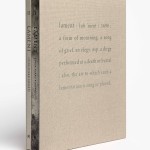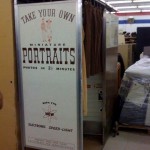Photographers on Photographers: Andre Ramos-Woodard in conversation with Clifford Prince King
I don’t remember the exact day I saw an image by Clifford Prince King for the first time, but I do remember the response I had pretty vividly. The nostalgic aesthetic his work brilliantly hones—the muted warm tones accenting varying complexions of Black skin—was far too familial for me to ignore. It took me back to memories of my childhood and my family in the most positively reaffirming way. It’s disappointingly not yet a normality to see Black people, specifically Black men, depicted in such a candidly affectionate fashion throughout the media and art history. I was instantly hooked.
As I look through King’s imagery to this day, a genuine feeling of sentimentality washes over me. From depictions of young Black men embracing in bed while shirtless to chillin’ in a room sharing a joint, there is a revitalizing authenticity revealed through the depictions of queer Black men in these private spaces: they stand as legitimate examples of Black identity that contradict the racial stereotypes tied to Black male bodies. The images demand validity. As our society finds ways to emphasize and combat injustices towards underrepresented communities, King’s photographs stand as raw, passionate examples of queer and Black identity.
Born in Nashville, Tennessee, Andre Ramos-Woodard is a contemporary artist whose works evoke feelings of memory and internal narrative. Primarily working with photo-based manipulation and drawing, he conveys ideas of communal and personal identity through internal conflicts. Ramos-Woodard is influenced by personal experiences he went through while discovering his own identity – he is queer and African-American, both of which are well-known targets for discrimination. He uses his art to accent the ideas of separation between him and the viewer, specifically those that may not resonate with the ideas of the Other or problems within minority groups in contemporary culture. Ramos-Woodard received his BFA from Lamar University in Beaumont, Texas, and is currently pursuing his MFA at The University of New Mexico in Albuquerque, New Mexico.
Clifford Prince King (b. 1993) is an artist and photographer living and working in Los Angeles, CA. King documents his intimate relationships in traditional and routine settings that speak on his experiences as a queer black man. As an artist who did not attend college or formally study the medium, King’s imagery is uniquely his own. Layered within his tender portraits are nods to the beyond. Shared offerings to the past manifest in codes hidden in plain sight, known only to those who sit within a shared place of knowledge. A poster in a bedroom, a wig on a dresser, the labor of watermelon, small collections of items that signify a specific blackness and sensuality. All these could be missed. In these instances, King’s work begins to morph into an offering of memory; it is how he honors and celebrates the reality of layered personhood. Soft moments of refuge and uninhibited intimacy that is unapologetically honest.
King’s imagery prioritizes what it means to be seen and tended to in ways that move beyond the physical. Portraiture becomes prose. It is in the layering of spaces that King’s work is not simply an act of archiving; it is a part of a collective world making, of sustaining and imagining black queer existence defined by the lived experience of those who are black and queer.
ADRW: To start off, let’s get a brief explanation on your practice. What brought you to photography and what keeps you latched to the medium?
CPK: It all started with film. I spent the majority of my childhood and early adulthood watching movies and unknowingly studying cinematography. Movies helped me discover how imagery and camera work can elevate feelings and emotions. I didn’t realize by watching movies all my years that I was studying the way I’d like to make people feel through my own visuals.
ADRW: What have you been working on most recently? Have the current global and national events impacted your work?
CPK: I’ve been working on a video chat series, where I photograph friends and some stranger in different cities via facetime. Covid-19 has made it difficult to photograph people the way I normally would, but it hasn’t stopped me from making work. More self portraits, which has been interesting.
ADRW: Queer identity and Black identity are crucial themes in your work, and are communal identities you’ve stated that you associate with (as do I). I personally think portraiture has an unmatched ability to capture different aspects of a person’s identity. What role does your own personal experiences impact your portraits?
CPK: The majority of the portraits I take are often recreations of scenarios I have been in, or they are scenes that I would like to see normalized or just seen more of in general. Some portraits are based on dreams, so I’ll recreate the dream within a photograph. Sometimes, the friend or stranger I am photographing will just be doing whatever they’re doing and I’ll say “wait, can you do that again?” and I take a photo, and then we’ll go back to our conversation. It’s a variety of all these things.
ADRW: It’s nice to see queer Black men in your photographs throughout various personal and intimate environments—spaces that allow for vulnerability. This is contrary to the way aggressive Black men are stigmatized. Do you consider these stigmas when you approach work?
CPK: I do consider these stigmas, definitely. However, I find myself digging deeper and feel as though my earlier work focused more on the destigmatization of black men. Now, I’m more focused on creating images that place black queer men in everyday scenarios or scenes with the goal to normalize black gay life in all communities through a romantic gaze.
ADRW: In previous interviews, I’ve seen the word “realness” used to refer to your work. I completely agree. There’s a sense of uncensored and raw emotion weaved within images that seem simultaneously staged and candid. How do you approach this concept of realness?
CPK: I guess just being able to let go. Not focusing too much, or overthinking a photograph. Taking a photo, but also remaining present and in conversation with the people I’m photographing. There is intention, but high levels of control.
ADRW: Are there any artists, photographers, or people that inspire you? Or any favorite photographs?
CPK: So many. Alvin Baltrop, Marlon Riggs, Texas Isaiah, Ren Hang, Shikeith, Pierre Davis, Devin N. Norris, Christen Mooney, Elliot Jerome Brown Jr., my father, Clifford Prince King Sr., Derrick Woods-Morrow, Fatima Jamal, David Hammons, and everyone involved in the Harlem Renaissance. I can’t choose a favorite photograph- there are so many that stand alone and are great for different reasons.
ADRW: I really appreciate you taking the time to answer these questions! I’m looking forward to seeing what you make next.
Keep up with Andre here:
andreramoswoodard.com / @andreduane
Keep up with Clifford here:
cliffordprinceking.com / @cliffordpirinceking
Posts on Lenscratch may not be reproduced without the permission of the Lenscratch staff and the photographer.
Recommended
-
Aaron Rothman: The SierraDecember 18th, 2025
-
Photographers on Photographers: Congyu Liu in Conversation with Vân-Nhi NguyễnDecember 8th, 2025
-
Linda Foard Roberts: LamentNovember 25th, 2025
-
Arnold Newman Prize: C. Rose Smith: Scenes of Self: Redressing PatriarchyNovember 24th, 2025
-
Spotlight on the Photographic Arts Council Los AngelesNovember 23rd, 2025






































































